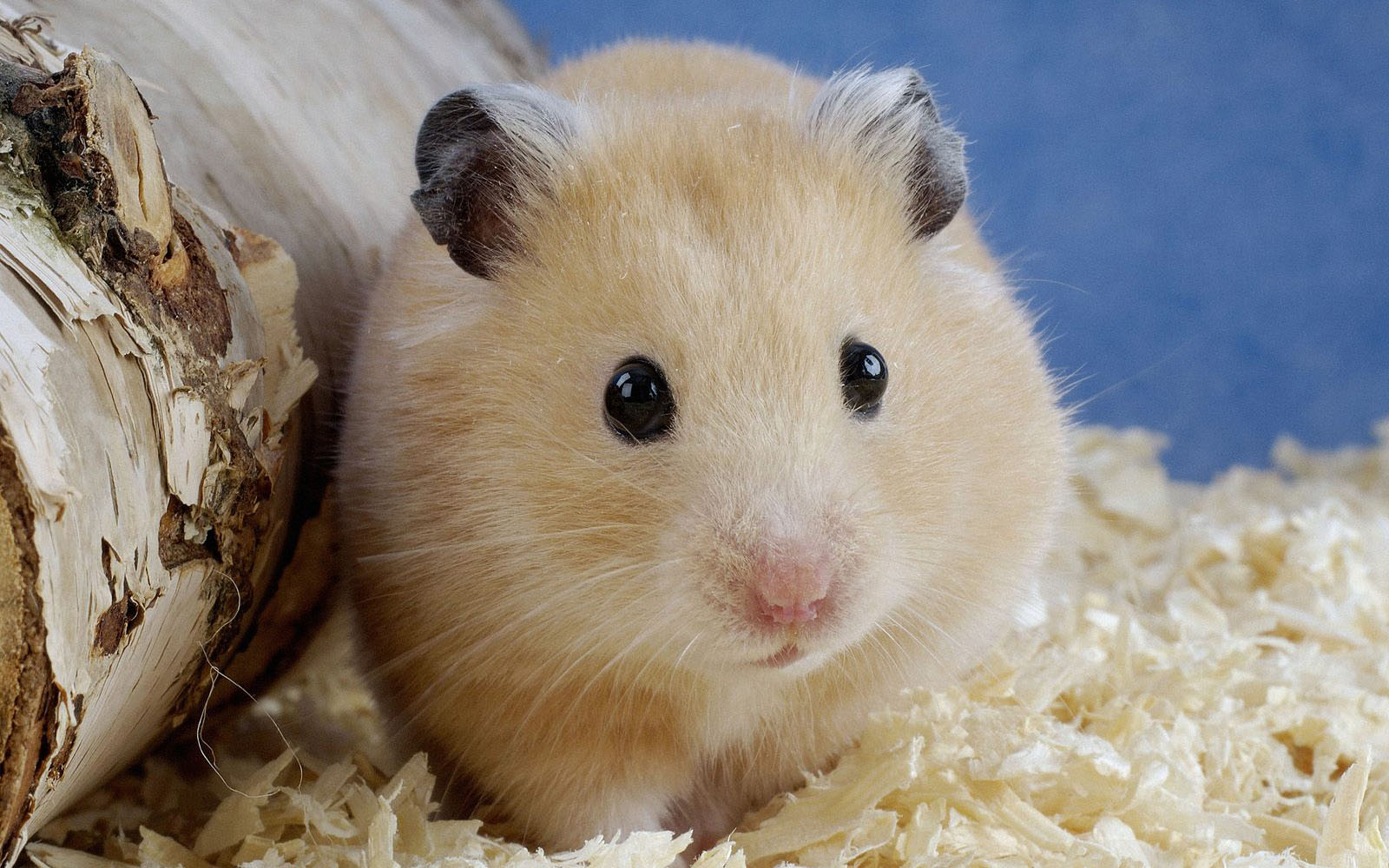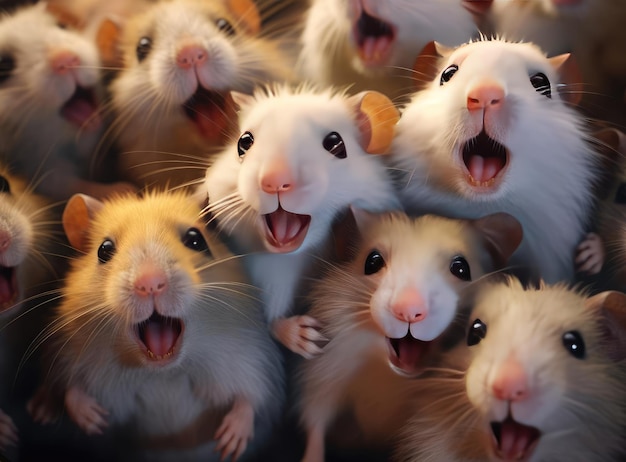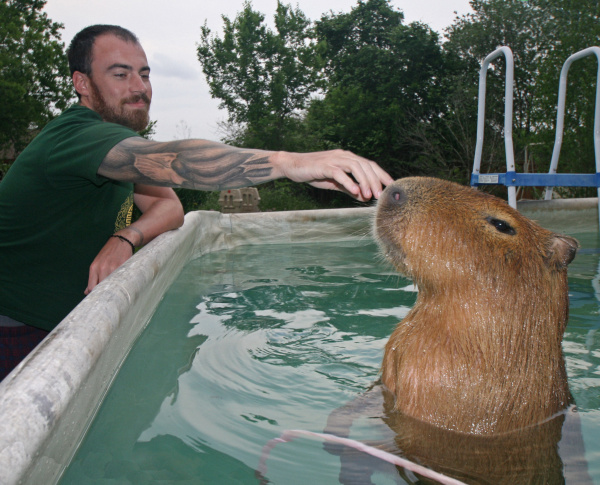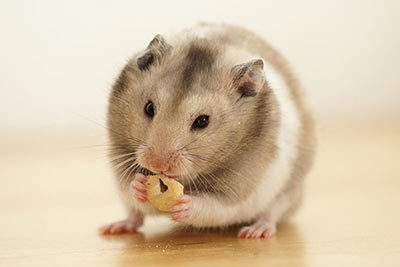hamsters are beloved pocket pets known for their adorable appearance, playful nature, and low-maintenance care. While most hamster species are relatively small, there are a few breeds that stand out for their remarkable size. In this comprehensive guide, we will explore the world’s biggest hamster breeds, delving into their unique characteristics, care requirements, and fascinating facts.
Can a Hamster Eat a Strawberry?
Seemore: Can a Hamster Eat a Strawberry?
1. Syrian Hamster (Mesocricetus auratus)

Also known as the golden hamster or teddy bear hamster, the Syrian hamster is the largest and most popular hamster breed in the world. They can grow up to 6-8 inches in length and weigh between 120-200 grams. Syrian hamsters have a distinctive golden-brown coat, although they can also come in various other colors and patterns. They are known for their friendly and docile nature, making them ideal pets for families with children.
Appearance and Characteristics
Syrian hamsters have a stocky build with short legs and a round body. They have small ears and large, black eyes that give them an endearing expression. Their fur is soft and dense, and they have a wide range of color variations, including golden, cream, cinnamon, and black. Some Syrian hamsters also have unique markings, such as spots or stripes, adding to their charm.
These hamsters are solitary animals and should be kept alone to avoid any potential conflicts. They are also nocturnal, meaning they are most active at night. However, with proper handling and socialization, Syrian hamsters can become quite tame and enjoy interacting with their owners.
Care Requirements
Syrian hamsters require a cage that is at least 24 inches long and 12 inches wide, with a solid bottom to prevent any injuries. They also need plenty of bedding material, such as shredded paper or aspen shavings, to burrow and nest in. It is essential to provide them with a wheel for exercise, as well as chew toys to keep their teeth healthy.
In terms of diet, Syrian hamsters are omnivores and should be fed a balanced diet of commercial hamster food, supplemented with fresh fruits and vegetables. They also enjoy occasional treats like mealworms or small pieces of cooked chicken. Fresh water should always be available in a water bottle attached to the cage.
Fun Facts
- Syrian hamsters were first discovered in Syria in the 1930s and were brought to the United States in the late 1970s.
- These hamsters have expandable cheek pouches that they use to store food, allowing them to carry up to half their body weight.
- Syrian hamsters have a lifespan of 2-3 years, although some can live up to 4 years with proper care.
- In the wild, Syrian hamsters hibernate during the winter months to conserve energy and survive the harsh conditions.
2. Winter White Hamster (Phodopus sungorus)
Hailing from the cold regions of Siberia, the winter white hamster is a compact yet sturdy breed. They typically grow to around 4-6 inches in length and weigh between 20-40 grams. Winter white hamsters have a beautiful white coat during the winter months, which changes to a gray or brown color during the summer. They are known for their playful and energetic personality, making them a joy to watch.
Appearance and Characteristics
Winter white hamsters have a similar appearance to Syrian hamsters, but they are smaller in size. They have a round body, short legs, and a short tail. Their fur is dense and soft, with a thick undercoat to keep them warm in their natural habitat. As their name suggests, their coat changes color depending on the season, with a white coat in winter and a gray or brown coat in summer.
These hamsters are social animals and can be kept in pairs or small groups as long as they are introduced at a young age. They are also active during the day and enjoy playing and exploring their surroundings.
Care Requirements
Winter white hamsters require a cage that is at least 12 inches long and 6 inches wide, with a solid bottom. They also need plenty of bedding material to burrow and nest in, such as shredded paper or aspen shavings. It is crucial to provide them with a wheel for exercise, as well as chew toys to keep their teeth healthy.
In terms of diet, winter white hamsters have similar dietary requirements to Syrian hamsters. They should be fed a balanced diet of commercial hamster food, supplemented with fresh fruits and vegetables. It is essential to avoid overfeeding these hamsters, as they have a tendency to hoard food in their cheek pouches, which can lead to obesity.
Fun Facts
- Winter white hamsters were first discovered in Mongolia in the early 20th century.
- In the wild, these hamsters change color to blend in with their surroundings and avoid predators.
- Winter white hamsters have a lifespan of 1-2 years, although some can live up to 3 years with proper care.
- These hamsters are known for their ability to escape from their cages, so it is essential to have a secure enclosure for them.
3. Chinese Hamster (Cricetulus griseus)

The Chinese hamster is another large breed of hamster, growing up to 4-5 inches in length and weighing between 30-50 grams. They have a slender body with a long tail, giving them a mouse-like appearance. Chinese hamsters have a unique coat pattern, with a dark stripe running down their back and a white belly. They are known for their curious and active nature, making them entertaining pets.
Appearance and Characteristics
Chinese hamsters have a slender build with long legs and a long tail that makes up half of their body length. They have small ears and large, black eyes, giving them an alert expression. Their fur is soft and short, with a dark stripe running down their back and a white belly. They also come in various color variations, such as gray, brown, and white.
These hamsters are social animals and can be kept in pairs or small groups as long as they are introduced at a young age. They are also active during the day and enjoy exploring their surroundings.
Care Requirements
Chinese hamsters require a cage that is at least 12 inches long and 6 inches wide, with a solid bottom. They also need plenty of bedding material to burrow and nest in, such as shredded paper or aspen shavings. It is crucial to provide them with a wheel for exercise, as well as chew toys to keep their teeth healthy.
In terms of diet, Chinese hamsters have similar dietary requirements to Syrian and winter white hamsters. They should be fed a balanced diet of commercial hamster food, supplemented with fresh fruits and vegetables. These hamsters also enjoy occasional treats like mealworms or small pieces of cooked chicken. Fresh water should always be available in a water bottle attached to the cage.
Fun Facts
- Chinese hamsters were first discovered in China in the early 20th century.
- In the wild, these hamsters are excellent climbers and can often be found living in trees.
- Chinese hamsters have a lifespan of 2-3 years, although some can live up to 4 years with proper care.
- These hamsters are known for their ability to escape from their cages, so it is essential to have a secure enclosure for them.
4. Roborovski Hamster (Phodopus roborovskii)

The Roborovski hamster, also known as the desert hamster, is the smallest of the world’s biggest hamster breeds, growing up to only 2-3 inches in length and weighing between 20-25 grams. They have a compact body with short legs and a short tail. These hamsters are known for their fast and active nature, making them challenging to handle but entertaining to watch.
Appearance and Characteristics
Roborovski hamsters have a compact build with short legs and a short tail. They have small ears and large, black eyes that give them an alert expression. Their fur is short and dense, with a sandy brown color on their back and a white belly. They also have a distinctive white stripe running down their back.
These hamsters are social animals and should be kept in pairs or small groups as long as they are introduced at a young age. They are also active during the day and enjoy playing and exploring their surroundings.
Care Requirements
Roborovski hamsters require a cage that is at least 12 inches long and 6 inches wide, with a solid bottom. They also need plenty of bedding material to burrow and nest in, such as shredded paper or aspen shavings. It is essential to provide them with a wheel for exercise, as well as chew toys to keep their teeth healthy.
In terms of diet, Roborovski hamsters have similar dietary requirements to other hamster breeds. They should be fed a balanced diet of commercial hamster food, supplemented with fresh fruits and vegetables. These hamsters also enjoy occasional treats like mealworms or small pieces of cooked chicken. Fresh water should always be available in a water bottle attached to the cage.
Fun Facts
- Roborovski hamsters were first discovered in Mongolia in the early 20th century.
- These hamsters are the fastest of all hamster breeds, reaching speeds of up to 3.5 miles per hour.
- Roborovski hamsters have a lifespan of 2-3 years, although some can live up to 4 years with proper care.
- These hamsters are known for their ability to escape from their cages, so it is essential to have a secure enclosure for them.
5. European Hamster (Cricetus cricetus)

The European hamster, also known as the black-bellied or common hamster, is one of the largest wild hamster species, growing up to 10 inches in length and weighing between 200-500 grams. They have a stocky build with short legs and a short tail. European hamsters have a distinctive black stripe running down their back and a white belly. They are known for their shy and elusive nature, making them challenging to observe in the wild.
Appearance and Characteristics
European hamsters have a stocky build with short legs and a short tail. They have small ears and large, black eyes that give them an endearing expression. Their fur is dense and soft, with a sandy brown color on their back and a white belly. They also have a distinctive black stripe running down their back.
These hamsters are solitary animals and should be kept alone to avoid any potential conflicts. They are also nocturnal, meaning they are most active at night. However, with proper handling and socialization, European hamsters can become quite tame and enjoy interacting with their owners.
Care Requirements
European hamsters require a cage that is at least 24 inches long and 12 inches wide, with a solid bottom to prevent any injuries. They also need plenty of bedding material, such as shredded paper or aspen shavings, to burrow and nest in. It is essential to provide them with a wheel for exercise, as well as chew toys to keep their teeth healthy.
In terms of diet, European hamsters are omnivores and should be fed a balanced diet of commercial hamster food, supplemented with fresh fruits and vegetables. They also enjoy occasional treats like mealworms or small pieces of cooked chicken. Fresh water should always be available in a water bottle attached to the cage.
Fun Facts
- European hamsters were first discovered in Europe in the 18th century.
- These hamsters are considered an agricultural pest in some areas due to their habit of digging burrows and damaging crops.
- European hamsters have a lifespan of 2-3 years, although some can live up to 4 years with proper care.
- In the wild, these hamsters hibernate during the winter months to conserve energy and survive the harsh conditions.
6. Campbell’s Dwarf Hamster (Phodopus campbelli)

Campbell’s dwarf hamster, also known as the Russian dwarf hamster, is another popular pet hamster breed that can grow up to 3-4 inches in length and weigh between 20-30 grams. They have a compact body with short legs and a short tail. These hamsters come in various color variations, such as gray, brown, and white. They are known for their curious and active nature, making them entertaining pets.
Appearance and Characteristics
Campbell’s dwarf hamsters have a compact build with short legs and a short tail. They have small ears and large, black eyes that give them an alert expression. Their fur is soft and dense, with a wide range of color variations, including gray, brown, and white. Some Campbell’s dwarf hamsters also have unique markings, such as spots or stripes, adding to their charm.
These hamsters are social animals and can be kept in pairs or small groups as long as they are introduced at a young age. They are also active during the day and enjoy playing and exploring their surroundings.
Care Requirements
Campbell’s dwarf hamsters require a cage that is at least 12 inches long and 6 inches wide, with a solid bottom. They also need plenty of bedding material to burrow and nest in, such as shredded paper or aspen shavings. It is essential to provide them with a wheel for exercise, as well as chew toys to keep their teeth healthy.
In terms of diet, Campbell’s dwarf hamsters have similar dietary requirements to other hamster breeds. They should be fed a balanced diet of commercial hamster food, supplemented with fresh fruits and vegetables. These hamsters also enjoy occasional treats like mealworms or small pieces of cooked chicken. Fresh water should always be available in a water bottle attached to the cage.
Fun Facts
- Campbell’s dwarf hamsters were first discovered in Mongolia in the early 20th century.
- These hamsters are excellent climbers and can often be found living in trees in the wild.
- Campbell’s dwarf hamsters have a lifespan of 2-3 years, although some can live up to 4 years with proper care.
- These hamsters are known for their ability to escape from their cages, so it is essential to have a secure enclosure for them.
Conclusion

Hamsters may be small animals, but they come in a variety of sizes and personalities. The world’s biggest hamster breeds, including the Syrian, winter white, Chinese, European, and Campbell’s dwarf hamsters, offer unique characteristics and care requirements. Whether you prefer a friendly and docile pet or an active and playful one, there is a big hamster breed out there for you. With proper care and attention, these adorable creatures can make wonderful companions for many years to come.
